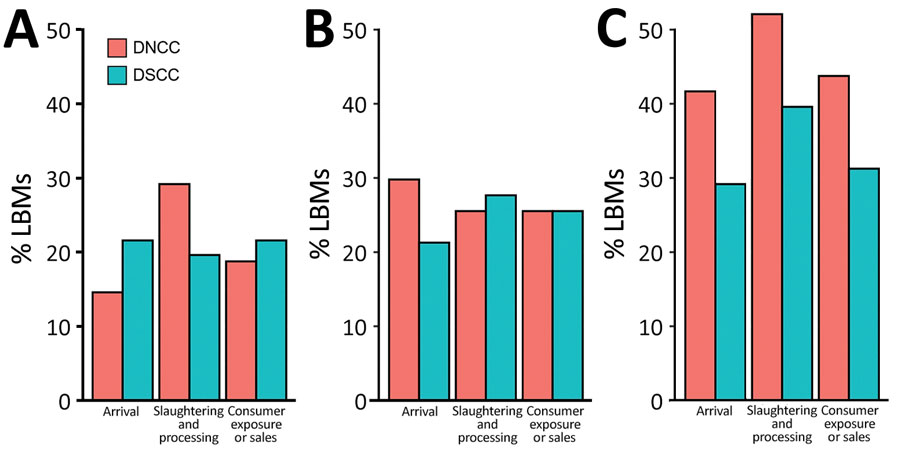Volume 27, Number 9—September 2021
Research
Risk Areas for Influenza A(H5) Environmental Contamination in Live Bird Markets, Dhaka, Bangladesh
Figure 3

Figure 3. Distribution of influenza A(H5) virus environmental contamination in specific work zones in LBMs of DNCC and DSCC, Dhaka, Bangladesh, January–March 2016. A) January; B) February; C) March. DNCC, Dhaka North City Corporation; DSCC, Dhaka South City Corporation; LBM, live bird market.
Page created: July 06, 2021
Page updated: August 17, 2021
Page reviewed: August 17, 2021
The conclusions, findings, and opinions expressed by authors contributing to this journal do not necessarily reflect the official position of the U.S. Department of Health and Human Services, the Public Health Service, the Centers for Disease Control and Prevention, or the authors' affiliated institutions. Use of trade names is for identification only and does not imply endorsement by any of the groups named above.